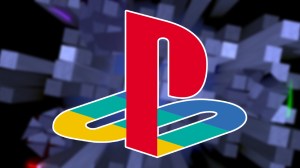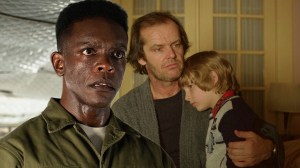
Next week, it’s a yabba-dabba-do-over when DC Comics will roll out a brand new interpretation of The Flintsones from writer Mark Russell and artist Steve Pugh.
Videos by ComicBook.com
The Flintstones is likely the most straightforward of DC’s recent animated series reinventions, with the characters still essentially looking and functioning in the same way they used to, albeit with a more contemporary sensibility.
The issue, the latest in DC’s recent wave of Hanna Barbera reinventions, is due in comic shops and on ComiXology next Wednesday, July 6. It features a main cover by Pugh, with variants from Pugh, Daniel Hipp, Dustin Nguyen, Walter Simonson, and Ivan Reis.
Russell and Pugh joined ComicBook.com to talk about the new series. You can see a preview of the first issue below, and pre-order it on ComiXology here.
How did you guys come together on this? Obviously you’re both known for more mature work.
Mark Russell: I think that they’re looking to expand what people think of as licensed comic books. I think DC to their credit has made a real effort to sort of bring really quality writing in the comic books, and not just treat them like disposable issues turners that only appeal to people that have read 30 previous issues of Green Lantern or something.
Especially the conversations I’ve had with Dan [DiDio], he’s really committed to having good storytelling — finding people who can tell good stories where you don’t to have a lot of continuity. You don’t need to be that deeply engrossed into a universe to just appreciate a good 23-page comic book. I think that’s what he saw in me is somebody who’s kind of an outsider to comics, who’s not really turning out the same storyline over and over. I think that’s why he gave me an opportunity to work on The Flintstones.
Now Steve, what’s the challenge in crafting the look of this book? Obviously it’s not like Scooby Apocalypse where there essentially redesigning everything from the ground up. The Flintstones is still more or less The Flintstones. You just aren’t drawing in a house style from 50 years ago.
Steve Pugh: [Laughs] No. There was a quite extensive design process involved. Originally Amanda Conner did the first sketches which nailed down that they were going to be the original characters in very similar look, but a more realistic, slightly cartoon style. I think my touchstones were things like MAD Magazine where they caricature celebrities, like John Serverin who had this wonderful way of making human beings look like cartoons.
I think I was just imagining that The Flintstones were real. It was just several different artists drawing the same people so that the 60;s cartoons were a caricature of these people. Now I’m doing my sort of caricature of these people. As you say, it is a different book from Scooby Apocalypse, certainly from Wacky Raceland, which is more a reinvention. The Flintstones‘s core idea doesn’t really need updating, just the references and the approach, and the maturity of the writing. That needs updating. The touchstones of the family lost in this world and exploring this world. That was set and that was good. That shouldn’t be thrown out. I move from that center, and hopefully struck a middle ground between the realism and the cartoonery.
Mark, I think one of the things that has been a strength for you both in terms of Prez and in God is Disappointed in You, is this ability to find the edge of absurdity and how far you can push it before it seems to fantastical. Is there a similarity to how you approach the caveman world of Flintstones versus the crazy kind of near future, almost Idiocracy world of something like Prez?
Russell: Yeah, they’re very similar actually. I think the edge of absurdity is always very near. You just have to look for it in the things you take for granted everyday but don’t really think about. I think in a lot of ways that’s what The Flintstones is, is thinking about the things that people take for granted everyday in their lives. Their garbage disposal, their car, their job.
You can accentuate how absurd it is by putting it in that prehistoric context. Where all of a sudden the garbage disposal’s a giant iguana, or the job is cutting giant slabs of granite for which you’re paid tiny pebbles, which is basically what all jobs in modern capitalist society are. You’re making huge amounts of money for which you’re being paid pennies on the dollar.
The character dynamics of The Flintstones as a show are somewhat antiquated in terms of gender dynamics. Has it been interesting to you to reinvent Betty and Wilma in particular and try to find a home for them where they still feel like the same characters without being probably quite so potentially “problematic?”
Russell: Yeah. I think that in a lot of ways The Flintstones as I’m writing it is a critique of a lot of these social assumptions that people had when the original Flintstones was on the air. We definitely wanted Betty and Wilma to be more than just accessories to Fred and Barney.
I also wanted them to have their own lives and their own personalities. Also to give the sense of how a woman who is now just kind of like a housewife might feel trapped by that life, and how they might create a rich interior life to compensate for that fact that they’re no longer really valued by the civilization they live in.
Pugh: Their essential roles haven’t changed. They’re still put in the position of being housewives, but the thing that made it a little cheesy and a little redactive was in the show they were really plot devices. The boys would do something stupid and then the girls would come along and scold them.
In the reinterpretation, in Mark’s world, everybody puts a foot wrong. Everybody has emotions. Everybody has a chance for an emotional life. A chance to do something stupid. A chance to be the good guy. A chance to be the bad guy. It’s a much more rounded relationship.
I hadn’t really thought about it until you were talking about feeling trapped in domesticity. Did you put any thought at all that it’s probably a little bit different being trapped alone with your infant child in a world where all the appliances are talking animals? You’re being engaged constantly…
Russell: Although the directive I was given from DC was that the humans cannot speak directly to the animals, and the animals cannot speak directly to the humans. The animals talk, but it’s all like them throwing up their hands to the sky or talking to each other. Whereas the humans don’t really realize the animals are talking.
Still, there’s something to be said about being surrounded by these animals. There is a scene I wrote where Wilma and Pebbles are going out. Fred asks if he wants them to come with him. They’re like, no just stay home and relax. They leave. When he’s homes alone he looks around and there’s just the eyes of all these animal appliances staring. So relaxing. He decides to go out because he just feels like he’s uncomfortable in his own home.
Pugh: Who doesn’t at some point feel that the broadband and the TV are conspiring against you?
Russell: We’re kind of at that point now where you look around. You’ve got all these smart devices and everything staring back at you. They’re like these semi cognizant appliances that are in your everyday surroundings. You’re never really truly alone even though you can’t really form a relationship with any of those things.
One thing I did want to ask you guys because obviously you talked a little bit about doing a world with a more plausible and more realistic looking, as opposed to being a straight up 60’s cartoon. Was there anything that you were able to draw away from the two live action movies, or did you stay as far away from those as you could while you were trying to craft the world?
Russell: I tried watching the first one. I couldn’t make it through it to be honest. It was so depressing and bad. I decided not to let that influence me at all.
Pugh: I remember watching them at the time. They were fun. I thought Rosie O’Donnell was weird casting. John Goodman was so good. I think it was because it was a Spielberg thing wasn’t it? He’d just done Jurassic Park. I think everybody wanted to see what the dinosaurs looked like from what I remember.
I think I had a note that I was legally obliged not to make it look like John Goodman. They didn’t have the rights to the imagery.
Right, yeah. That probably makes sense. When I think of The Flintstones typically I think of the classic material which is very episodic. Are you guys going to be more or less one and done kind of issues, or are you going to have an ongoing story?
Russell: They’re pretty episodic in that each issue is designed to tell a complete story from beginning to end. At the same time there’s a greater world and a greater plot line for the characters I want to observe. It’s more character development of plot based though. I really want to show the characters in a way that accumulates over the issues, but really each issue is a self contained story.
Pugh: But the characters do remember what happens last time.
With the crazy animals and constructs and things, is there anything that you guys created for this story that you’re particularly proud of? At least for the first little bit is it mostly your interpretation of stuff that you’d seen on the show?
Russell: You know what I’m most proud of? I don’t know if Steve feels differently. Creating Wilma’s career as an artist. There’s a scene where she walks into the Bedrock Museum of Art. It’s just spell bounding, all the weird artwork on the walls, the installations and stuff.
That’s one of my favorite drawings that Steve did for issue #1 was when you go into that museum. You see all this bizarre stone age artwork on the walls. I think also, it lends a lot of heft to Wilma’s story to give her this artistic outlet, this thing that she does aside from just being a housewife. Personally that’s what I’m most proud of, at least in issue number 1.
Pugh: I think for me, it was reading it in the script. Then doing it in the pages. The beautiful, unexpected moment when we get a flashback to Wilma’s family and her origin with the hunter-gatherers. It’s a tonal shift that gives weight to everything else that’s happened in that little back story of her artwork. I loved it. I couldn’t have been happier when that moment happened in the script and able to realize it on a page. I was just so delighted. It’s beautiful writing.








